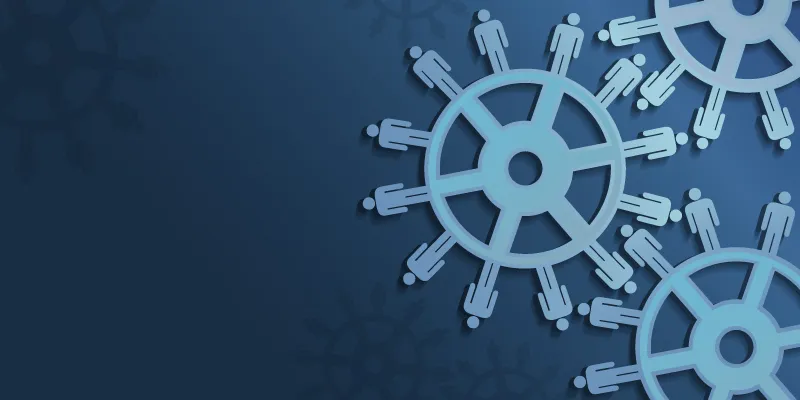Understanding the “human” in human resources
While ordinary organisations are built around processes and systems, great organisations are built around people. And that’s why the happiness of employees is of utmost importance.

Before entering or leaving the workplace each day, if you were to ask employees to click one of those buttons with smiley faces you find at some airports, what would register? They have five buttons to choose from: a smiley face if they felt happy at work that day, a frown face if they felt sad, and intermediate ones. Do you think that those choosing the happy smiley would have contributed more at work that day?
Most companies pay little attention to how employees are - or should be -feeling while entering or leaving the workplace. They don’t realise how central the emotions of individuals are in building a positive and productive workplace and more importantly, how a small swing in feelings toward the happiness side creates better work output.
In a world that’s increasingly focusing on automation and agility, the human in the workplace is sometimes lost, and mostly unacknowledged. While ordinary organisations are built around processes and systems, great organisations are built around people.
So, how should we approach re-introducing the human element in workplace culture? It’s not that difficult and let’s look at three areas where we can re-imagine the human in the workplace.
The first is to do with the emotional connect the organisation creates with its people. Feelings and emotions that connect people to their work have a direct impact on how customer focused, innovative, team-oriented or competitive people are at work.
The emotional connect influences employee satisfaction, burnout, teamwork, and hard measures such as financial performance and absenteeism. The term discretionary effort is broadly used to explain ‘going beyond the call of duty’. And the extent to which a team or company is able to get their people to give this discretionary effort makes a difference. To make this happen, the purpose and cause of work has to align with individual belief e.g. build the best product, cause no conscious harm, use business to change the world for the better.
Most companies indulge in the first level of connect with employees like wellness, engagement and so on. Few go to the levels of developing good managers and performance systems. Only the rare go to the extent of developing trust and aligning company purpose with individual belief systems.
The second is about leveraging people networks at work. Organisations of the future will need to make smart use of employee networks to drive efficiency and spur innovation. We will see a change in how organisations work - from a stable structure driven premise to a network-enabled dynamic organisation.
For this to work, networks need to be harnessed both formally and informally. For example, if a difficult project has to be delivered in 24 hours, how quickly can we search the network to get a team together for this purpose? Or if a complex machine-learning problem has to be solved, how do we find the in-house expert who is hidden in the company?

Today, the software allows companies to gather a wide range of data on collaboration and to plot people networks that exist. People networks make collaboration happen – think of them as the maps to the workplace that quickly calculate multiple paths for you to reach a destination harnessing organisational knowledge.
The third is about harnessing the social tools that people use all the time. While we all agree that employees are much more social outside work, their activity inside a workplace is not something to be ignored. Can companies extend their employees' social presence to cover work interactions? It’s well established that you cannot get people to share what they do in the private space for work as that eliminates the element of fun.
However, if we can create a reality where the two worlds can co-exist for a limited purpose, the benefits are remarkable. For example, studies have shown that people who use social tools at work are much more likely to find coworkers with expertise that can help them. They are also much more likely to find the right experts in networks. Social tools at work can promote employee collaboration and knowledge sharing across silos and yes, they do work across generations and can make a huge difference.

The collaborative organisation is the one that can make this work efficiently (not perfectly). We also need focus on creating spaces for people to connect in person to make networks flourish. A positive encounter that happens when two people share the same physical space needs to be encouraged. Its absence is being felt in many workplaces where electronics have taken away the joy of human moments.
To make the workplace more human, we need to focus on the human. What we see quickly happening is that our ability to interact with each other and solve problems is being replaced with systems and tools. There is no denying that they make the workplace efficient, but they also make it a little less human.
Additionally, most of our attention, these days, is focused on the rise of advanced workplaces relying on Artificial Intelligence (AI). We don’t stop to consider the potential of amplifying the human, to better workplaces. The future is about companies encouraging people to amplify human capability as much as it is about harnessing tools like AI. So if we can leverage the ability of the human in the workplace by leveraging data and computing power and integrating those with human behaviour and emotions, we could have something very powerful.
Workplaces are designed and inhabited by humans, and humans are inherently flawed in some respects. But in the foreseeable future, humans will still be at work, and that work needs to be interesting. Combining technology, human relations, and social behavior could result in a very pleasant surprise tomorrow – the human being back at work and more of a human at work.
(Disclaimer: The views and opinions expressed in this article are those of the author and do not necessarily reflect the views of YourStory.)







